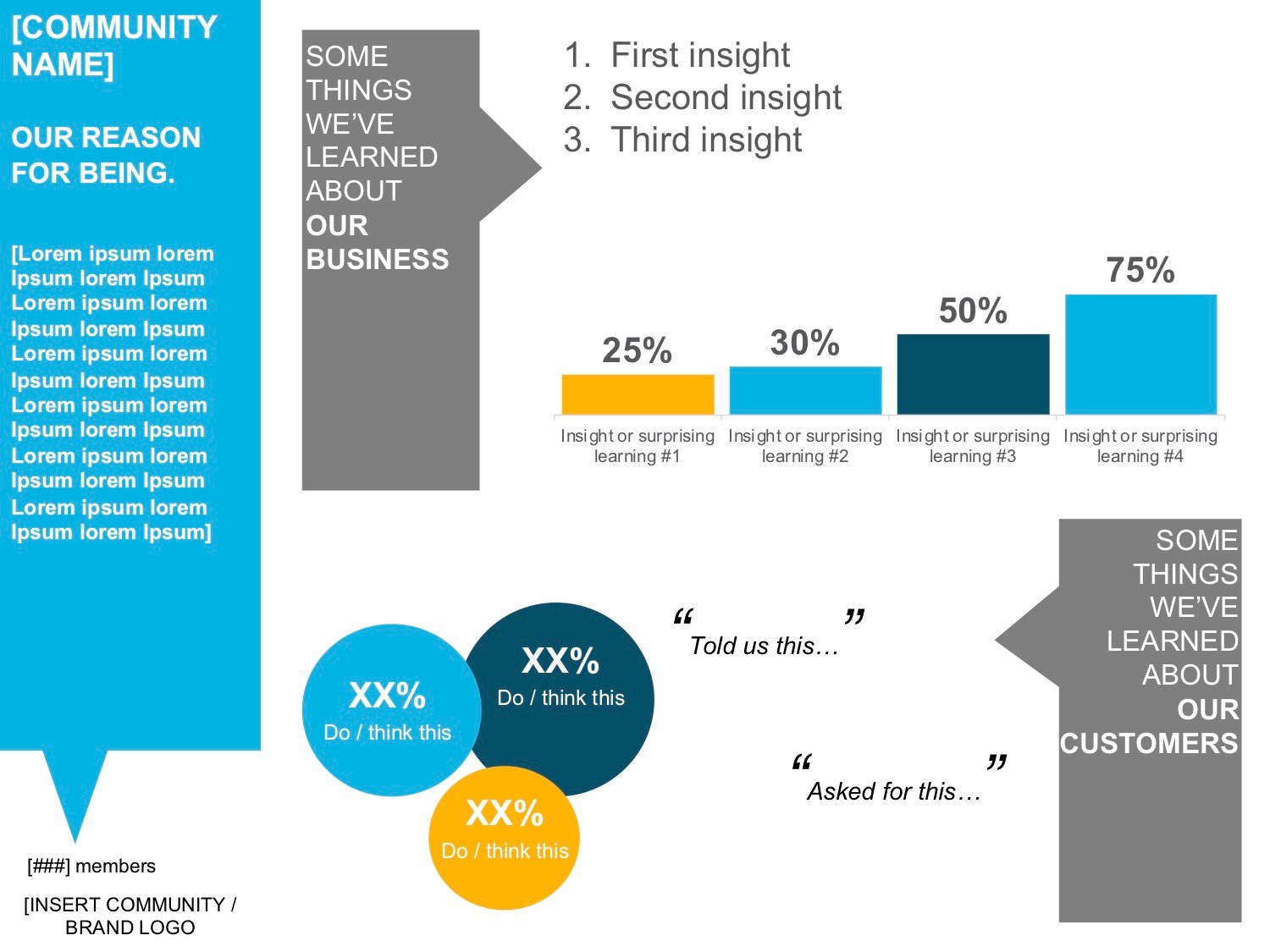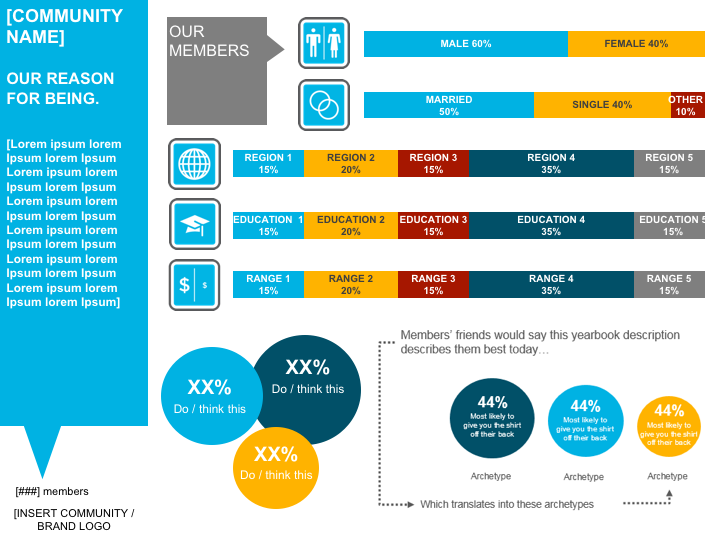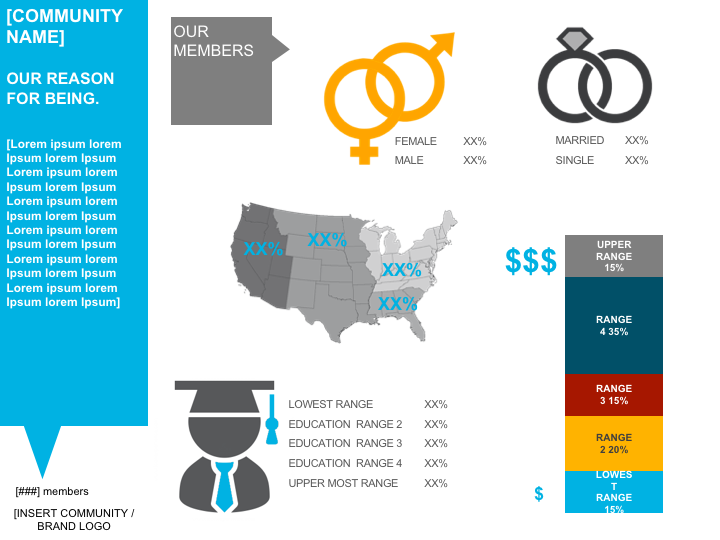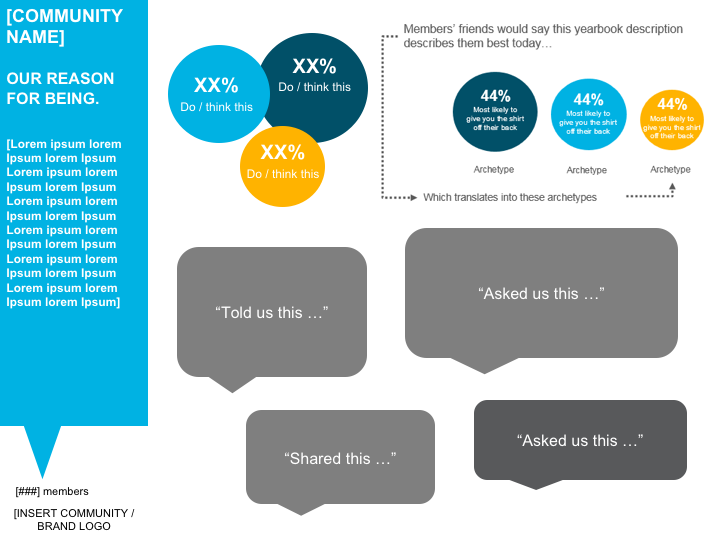Paramount to getting the most value from your Insight Community is the need to engage your stakeholders. By engagement, we don't mean passively responding to requests! This is more common in an ad hoc approach to insight collection, and not a longitudinal approach to customer intelligence.
Here are some tips and helpful templates that you can use to engage your stakeholders on an ongoing basis.
Initial Involvement:
At step 1, we encourage you to showcase the vision for the insight community to your stakeholders, which will help you to get buy-in and will also get other teams excited about the community. Also important is to establish how you will measure success, and what this success might look like for all teams involved.
Getting stakeholder buy-in is also critical for success because it aids in budget approval and keeps the project pipeline well populated. Here are some steps for initial involvement:
- Showcase what you're building: Profile of members you will recruit, recruitment plan, creative design, etc. You can also differentiate the community approach to others you may also be using to obtain customer feedback, and explain how the community will be superior for creating a longitudinal customer profile.
- Present and Discuss Plan: What is the objective for the community? What is the process for contributing to the research/engagement calendar? What are the expectations of stakeholders on an ongoing basis? Set expectations for timelines, analysis and reporting.
- Discuss Measures of Success: How will you measure success and how will you be communicating wins to your stakeholders?
Ongoing Involvement:
For continuous engagement, we recommend having monthly or bi-monthly meetings with stakeholders. These touchpoints will provide community updates to the larger team, and will help to maintain a high level of enthusiasm and buy in. Below is a slide example that you can download to share key learnings you've gleaned from the community - both about your business and about members.

Stakeholder Shareback
Its also recommended to provide updates to stakeholders about the makeup of your community. In addition to community size, stakeholders often are interested in knowing the geographic origin, age and socioeconomic status of members as well (in addition to many other details!). Below is a downloadable template you can use to help inform your internal teams about who is on your community.
Member Composition Shareback



Yearly Planning Sessions (or Roadmapping)
The goal of an Insight Roadmap is to develop the foundation to plan a set of activities that will 1] Answer the goals and objectives of your organization as a whole, and 2] Provide members with a satisfying and valuable experience from their participation.
Conducting individual interviews with key stakeholders on a yearly basis and building a plan for the year ahead is a great way to ensure the community is operating in a strategic way. Here are some conversation starters we recommend you use when meeting with stakeholders to plan the year ahead:
- What are the big questions your organization needs answered by customers?
- Are there other sources of information (think one piece of data) within the organization that could be leveraged to gain deeper insight into community activities?
- What recent trends have emerged that you are concerned about?
- What information about customers would have the greatest value to your team or various departments?
- What are some of the programs, promotions, and/or initiatives that members of the community could co-create with you?
- If we were to meet one year from now, how would you judge the work done on the community as a success?
- If you could ask the community one question, what would it be?
Stakeholder Hubs
Oftentimes, there is not enough visibility into the insights you gather from your community. A solution that many of our customers have adopted to eliminate this all-too-common challenge of data silos and facilitate the accessibility and visibility to the data they gather is stakeholder hubs. With every new technology however, a new strategy must be implemented to ensure you are getting the most from the time and energy you invest - a strategy that can take time and resources to develop.
Learn about Stakeholder Hubs here.
Other Ways to Involve Stakeholders
- Host an "Ask the Expert" forum: Ask internal stakeholders to participate in a short – could be under an hour – discussion forum with a subset of your members. This could be a follow-up to an activity you’ve run for them, or just an opportunity to introduce the stakeholder to members as someone who benefits from the insight they’re providing.
- Give Stakeholders Access: Your community houses a wealth of valuable information about your members. Let your internal customers search for information to answer day-to-day questions in Alida Sparq. It’s a win-win - you get some time back in your day, and the platform empowers the larger organization.
- Connect Members and Stakeholders in a Meet-Up: Members would love a chance to directly interact with your brand and provide their in-person feedback. Your stakeholders would have an opportunity to ask questions directly of members, potentially show stimuli or new product/concept ideas and get feedback directly from members.








